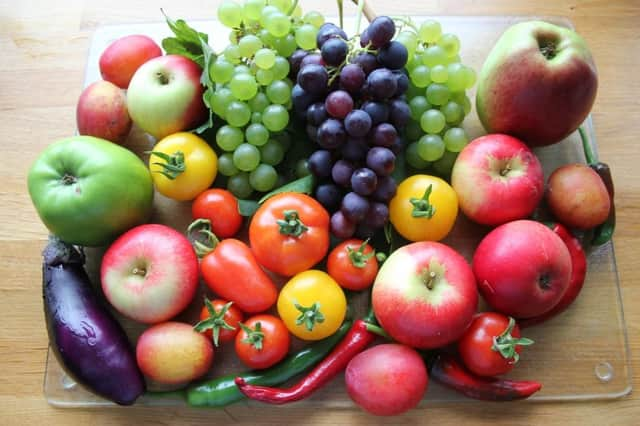GARDENING: Vital to keep a record of your handiwork


There are photographic prints, images stored online, contents of the deep freeze, collectively they provide all the encouragement required to get a repeat performance under way.
Keeping a written record of key dates, performance, and significant observations in relation to plant growth, has always been an important aspect of gardening. For this fellow it remains so, but increasingly, a series of smart phone images threaten to replace the notebook and pencil. Occasionally, I find that a single picture is better than a thousand words. Technology moves on!
Advertisement
Hide AdAdvertisement
Hide AdFor example, we operate a three-year crop rotation system on six island vegetable beds. This ensures that no single crop grows more than one year on the same patch. The main purpose is to avoid the build-up of a pest or disease relevant to that plant, but it also caters for their differing cultural demands.
When it comes to planting time, rather than trust memory-recall or go in search of the notebook to decide which vegetables go where, it`s quicker to reach into your pocket and view images taken of your beds the previous summer. It appears these thoughts are shared by others because I am increasingly approached by gardening acquaintances, with a mobile photograph in hand for plant identification.
A further reminder that we must get our growing-for-kitchen act together came last week when we dug into the freezer in search of more vegetable and fruit choices.
The current winter green harvest has been main provider of fresh vegetables for several weeks (sprouts, cabbage, broccoli, leeks), but now we`re tapping into supplies laid down at the height of summer when crops of garden peas, broad and runner beans were at their zenith and in danger of going to waste.
Advertisement
Hide AdAdvertisement
Hide AdThey were picked, prepared, and packed into bags for cold storage. This is a time-consuming operation, topping and tailing some, shelling pods of others, then blanching, but it's so worthwhile. The latter activity involves immersing batches of them into boiling water for two or three minutes, then plunging in and out of a cold bath before drying and bagging-up. The idea
being to arrest enzyme action that would otherwise reduce nutrient value, flavour, and colour, over time in cold storage.
When did you last examine your fruit trees and bushes? There might well be a surprise in wait. Just like the garden of `The Selfish Giant` ours has already recovered from the recent frosty grip and buds are swelling rapidly. This means it`s last call for any feeding, mulching or pruning as the growing season swings into action. Time enough to offer a dressing of fish, blood and bone which will then vanish under a generous layer of organic matter.
Given the relatively limited space occupied by soft fruit bushes in this garden, the cropping return can be quite amazing. A mature gooseberry plant delivers four to five kilograms of fruit, black and redcurrants even more. All three are easily raised from hardwood stem cuttings. If there's not enough room for a bush form, consider training any of these as a cordon or fan shape against a wall or fence. Container growing is another option.
Advertisement
Hide AdAdvertisement
Hide AdThe single plant of redcurrant `Jonkheer van Tets` has thrived in our garden for years. It`s a reliably heavy cropper of large fruits on long strigs so this ensures it stays. We`ll also keep the dwarf blackcurrant `Ben Sarek` because it is also a good doer. However, it is about to meet some competition. The large berries of `Ben Connan` have caught my eye in the Pomona Fruits
Catalogue. The late summer, thornless blackberries (`Loch Ness`), always contribute toward the freezer, but the raspberry harvest beats them all for quality and quantity. It begins with the main (floricane) varieties in July and continues through autumn (primocane) types until frost arrives. Plant a few strawberries in the garden or a container within the next week or two and you could be picking fruit by the end of June. They`re so easy to grow!